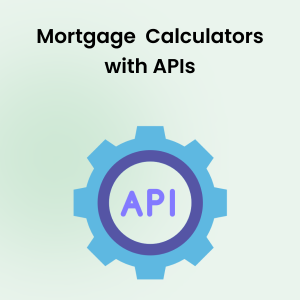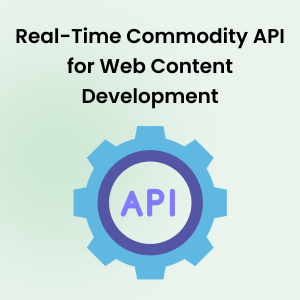Your cart is currently empty!
First Call Resolution Rate Metric Definition
Posted by:
|
On:
|
First Call Resolution Rate (FCR Rate) measures the percentage of customer issues or inquiries resolved during the first call, without requiring follow-up or escalation. This metric is crucial for customer support teams, as it directly impacts customer satisfaction and operational efficiency. A high FCR Rate indicates effective issue resolution and a positive customer experience, while a low FCR Rate suggests areas for improvement in training or processes.
Detailed Explanation
What is First Call Resolution Rate?
First Call Resolution Rate (FCR Rate) represents the percentage of calls in which customer issues or inquiries are successfully resolved on the first interaction. It is a key metric for evaluating the effectiveness of customer service, as it reflects the team’s ability to handle queries promptly without the need for repeat calls or escalations.
How it Works?
First Call Resolution Rate is calculated using the following formula:
FCR Rate = (Total Resolved Calls on First Attempt / Total Calls) × 100
This calculation shows the percentage of calls resolved during the first contact, allowing businesses to assess the efficiency and effectiveness of their customer service teams.
Types of FCR Rate Insights
- Department-Specific FCR Rate: Tracks FCR Rate by department, such as technical support or billing, to identify areas with high or low resolution effectiveness.
- Agent-Specific FCR Rate: Measures FCR Rate by individual agent to determine skill levels and identify training needs.
- Issue-Specific FCR Rate: Analyzes FCR Rate by type of issue (e.g., technical problems vs. account inquiries) to optimize resolutions.
Illustrative Scenarios
Examples
- A telecommunications support center achieves an FCR Rate of 80%, indicating that most issues are resolved on the first call.
- A retail customer service team finds that billing-related issues have a higher FCR Rate of 90%, while technical support issues have a lower FCR Rate of 70%, highlighting an area for process improvement.
Segmentation
FCR Rate can be segmented by department, agent, or issue type to identify factors affecting resolution success. For example, segmenting by issue type may reveal that certain problems require more expertise, guiding targeted training efforts.
Factors Influencing FCR Rate
- Agent Training: Well-trained agents are more likely to resolve issues on the first call.
- Access to Resources: Agents with quick access to information and tools can resolve issues faster, improving FCR Rate.
- Issue Complexity: Simple inquiries have higher FCR Rates, while complex technical issues may require follow-ups.
- Process Efficiency: Streamlined processes help agents resolve calls without needing to transfer or escalate issues.
- Customer Communication: Clear and effective communication can lead to quicker resolutions and higher FCR Rate.
Strategies to Improve FCR Rate
- Enhance Agent Training: Train agents on common issues and provide troubleshooting guides to boost first-call resolutions.
- Equip Agents with Resources: Provide agents with access to comprehensive information databases and tools to resolve calls efficiently.
- Monitor Complex Issues: Identify and address common complex issues that lead to lower FCR Rates through additional support and resources.
- Optimize Call Routing: Ensure calls are routed to agents with the relevant expertise to handle specific issues on the first call.
- Encourage Effective Communication: Train agents in clear, concise communication to ensure that customers fully understand resolutions.
Benchmark Indicators
Understanding First Call Resolution Rate benchmarks by industry helps businesses set realistic goals for customer support effectiveness and optimize processes:
- Telecommunications: FCR Rate benchmarks typically range from 70% to 85%, as issues are often technical and require specialized support.
- Healthcare: FCR Rate benchmarks range from 80% to 90%, especially for appointment scheduling and simple inquiries.
- Financial Services: FCR Rate generally ranges from 75% to 85%, particularly for account inquiries and basic support.
- Retail and E-commerce: FCR Rate benchmarks range from 80% to 90%, often for order inquiries and customer support.
- Travel and Hospitality: FCR Rate can range from 85% to 95%, as customer inquiries typically focus on booking support.
- Technology Support: FCR Rate benchmarks range between 65% and 80%, as complex technical issues may require multiple interactions.
Tools for Measuring FCR Rate
- Call Center Software: Platforms like Five9, Genesys, and RingCentral provide FCR tracking to monitor first-call resolutions.
- CRM Systems: CRM platforms like Salesforce and Zendesk integrate call data to track FCR and identify improvement areas.
- Analytics Tools: Tools like Google Analytics and customer support platforms provide data on call interactions and resolution rates.
Common Pitfalls and Mistakes
- Insufficient Agent Training: Inadequate training may result in low FCR as agents are unable to resolve issues on the first call.
- Not Routing Calls Properly: Ineffective call routing can lead to agents handling issues outside their expertise, lowering FCR.
- Ignoring Common Issues: Not addressing frequently unresolved issues can contribute to a low FCR Rate.
- Lack of Customer Follow-Up: Failing to confirm issue resolution with customers may result in unresolved cases being marked as completed.
- Not Utilizing Customer Feedback: Overlooking feedback can miss insights that may help improve FCR by addressing customer needs more effectively.
Frequently Asked Questions
What is First Call Resolution Rate?
First Call Resolution Rate (FCR Rate) measures the percentage of calls where issues are resolved on the first interaction, assessing customer support efficiency.
Why is FCR Rate important?
FCR Rate is important because it reflects a team’s ability to handle inquiries promptly, impacting customer satisfaction and reducing repeat calls.
How can I improve my FCR Rate?
To improve FCR Rate, enhance agent training, provide resources, optimize call routing, and monitor complex issue patterns for targeted solutions.
What factors influence FCR Rate?
Factors influencing FCR Rate include agent training, access to resources, issue complexity, process efficiency, and customer communication quality.
What are good benchmarks for FCR Rate?
Good FCR Rate benchmarks vary by industry, with rates above 80% generally considered good, while rates above 90% indicate highly effective customer support.



